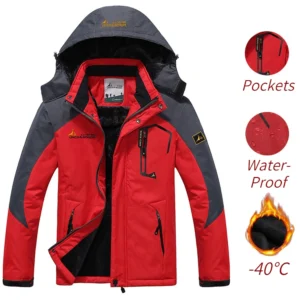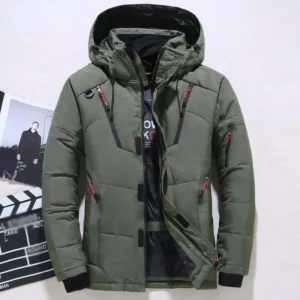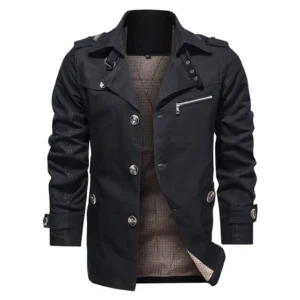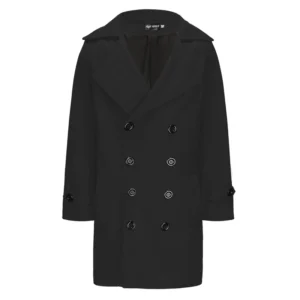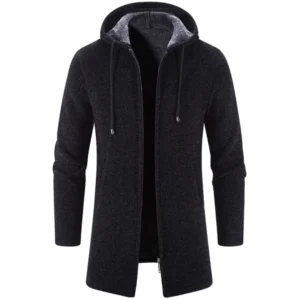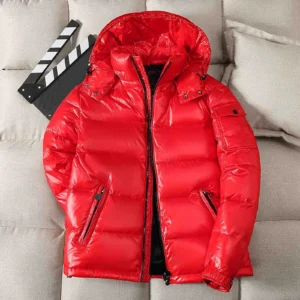Why Wool Overcoats Are the Ultimate Winter Choice
When winter’s chill sets in, nothing protects against the biting cold quite like a quality wool overcoat. These classic garments have stood the test of time not just for their timeless style, but for their unmatched performance in cold weather conditions.
Wool stands head and shoulders above synthetic alternatives thanks to its remarkable natural properties. The secret lies in wool’s unique fiber structure – each strand features tiny crimps that create countless microscopic air pockets. These pockets trap your body heat close to your skin, creating an exceptional thermal barrier between you and the frigid outside air.
What truly sets wool apart is its performance even in challenging conditions:
- Natural insulation that maintains warmth even when damp
- Breathable fibers that release excess heat and moisture to prevent overheating
- Water-resistant qualities from lanolin, wool’s natural wax
- Exceptional durability that ensures years of reliable winter protection
- Sustainable and renewable material that outperforms most synthetics
The proper coat length for maximum warmth becomes particularly important when selecting a wool overcoat for winter conditions. While synthetics may offer initial savings, quality wool overcoats represent a sound investment, often providing decades of reliable service with proper care.
For those seeking premium protection against winter’s worst, exploring Metro Cloak’s premium wool overcoats designed specifically for winter warmth offers an excellent starting point.
Premium Wool Types: Understanding Your Options
Not all wool is created equal when it comes to winter warmth. Understanding the distinctive properties of different wool varieties helps ensure you select an overcoat that provides optimal protection against cold temperatures.
Virgin Wool represents wool in its purest form – fibers used for the first time rather than recycled from existing garments. This distinction matters because virgin wool maintains its full length and strength, resulting in greater durability and insulating power. Overcoats made from virgin wool typically offer superior warmth and longevity.
Merino Wool comes from Merino sheep and features remarkably fine fibers (typically 15-24 microns in diameter). This fine structure creates an exceptional warmth-to-weight ratio, making Merino wool overcoats surprisingly light while delivering impressive thermal performance. The fine fibers also provide unmatched softness against the skin.
Cashmere, harvested from the undercoat of cashmere goats, represents the luxury gold standard. Its extraordinarily fine fibers (14-19 microns) create a fabric that’s approximately eight times warmer than regular wool while remaining incredibly lightweight and soft. The luxury cashmere overcoats available today represent the pinnacle of winter warmth and comfort.
Lambswool, shorn from young sheep during their first shearing, offers exceptional softness while maintaining good insulating properties. These coats typically feel gentle against the neck and wrists where direct skin contact occurs.
Alpaca Wool features hollow fiber cores that create superior insulation. This unique structure makes alpaca wool overcoats exceptionally warm despite their relatively light weight.
| Wool Type | Warmth Rating | Softness | Durability | Price Point |
|---|---|---|---|---|
| Cashmere | Exceptional | Luxurious | Moderate | Very High |
| Merino | Very Good | Very Soft | Good | High |
| Virgin Wool | Excellent | Medium-Soft | Excellent | Moderate to High |
| Lambswool | Good | Soft | Good | Moderate |
| Alpaca | Excellent | Soft | Very Good | High |
While 100% wool coats offer exceptional performance, strategic blends can sometimes enhance specific properties. Understanding whether 100% wool coats are best for winter can help you make the right choice for your specific needs.
Key Construction Features for Maximum Heat Retention
Even the finest wool requires proper construction techniques to maximize its warming potential. Several key features distinguish truly warm wool overcoats from those that merely look the part.
Fabric Weight and Density
The weight of wool fabric, measured in ounces per yard (oz/yd²) or grams per square meter (GSM), directly correlates with warmth. For genuine winter protection, look for overcoats using fabric weighing 24+ oz/yd² (680+ GSM). This substantial weight provides the density needed to block cold winds and maintain heat.
Weave Structure
The tightness and structure of the weave significantly impact an overcoat’s insulating ability:
- Melton: A dense, heavily felted weave with minimal visible texture that excels at blocking wind
- Beaver: Features a slightly raised nap that traps additional air for enhanced insulation
- Twill: Diagonal weave pattern that creates good density while maintaining flexibility
Lining Materials
A quality lining enhances warmth by adding an additional insulating layer:
- Quilted linings: Trap air between quilting layers for added insulation
- Thinsulate™: Technical lining that provides remarkable warmth without bulk
- Flannel lining: Soft, brushed fabric that adds significant warmth to wool overcoats
Design Elements
The design itself plays a crucial role in heat retention:
- Double-breasted construction: Creates an additional fabric layer across the chest for superior warmth
- High collars: Protect the vulnerable neck area from cold air infiltration
- Storm flaps: Cover zippers and buttons to prevent wind penetration
- Secure closures: Properly designed closures eliminate gaps where cold air can enter
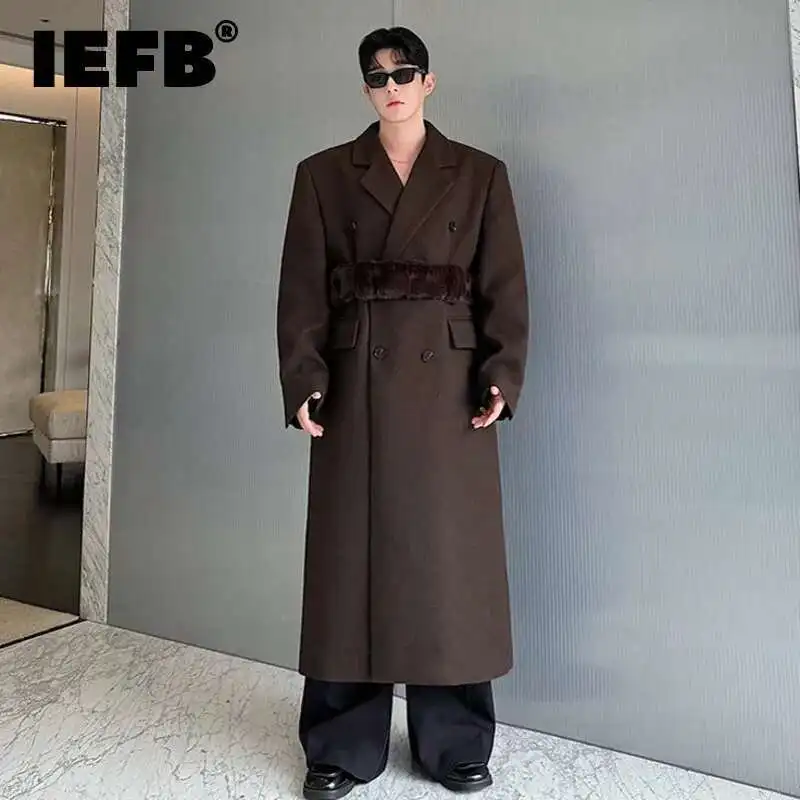
For those prioritizing maximum warmth, exploring double-breasted wool overcoats designed with superior heat retention offers significant advantages in extremely cold conditions.
Fit Considerations for Optimal Warmth and Comfort
Even the finest wool overcoat constructed with expert techniques will fail to provide adequate warmth if it doesn’t fit properly. The relationship between fit and thermal efficiency often gets overlooked, yet remains crucial for winter performance.
Proper sizing creates the ideal microclimate between your body and the coat. Too tight, and you’ll compress the wool fibers and eliminate the insulating air pockets. Too loose, and you’ll create air channels that allow warm air to escape and cold air to enter.
Key fit considerations for maximizing warmth include:
- Shoulder width: Should allow comfortable movement without excess fabric that creates cold spots
- Chest room: Provide 1-2 inches of space for layering without stretching the fabric
- Sleeve length: Must cover wrists completely, even when arms are extended
- Body length: The ideal winter coat length should cover your seat for maximum protection
Common fitting mistakes that compromise warmth include:
– Choosing fashion-forward slim cuts that eliminate layering capacity
– Selecting oversized coats that allow cold air circulation
– Compromising on sleeve length, leaving wrists exposed to cold
– Opting for shorter styles that leave the lower body unprotected
Finding the perfect winter coat length requires balancing both style preferences and practical cold-weather protection. Remember that proper fit not only improves warmth but also enhances the coat’s visual appeal and your comfort throughout the winter season.
Top 5 Warmest Wool Overcoats for Extreme Cold
When facing truly frigid conditions, these exceptional wool overcoats deliver uncompromising protection through premium materials and meticulous construction.
1. The Classic Melton Officer Coat
This military-inspired design combines a heavyweight 30 oz virgin wool melton fabric with technical innovation for superior warmth in the harshest conditions.
Key Features:
– 100% virgin wool with exceptionally tight weave
– Thinsulate™ quilted lining for additional insulation
– Double-breasted design with anchor buttons for secure closure
– Extended collar with throat latch for neck protection
– Internal wind guards at all openings
Pros:
– Exceptional wind resistance
– Rated for comfort in temperatures down to 0°F (-18°C)
– Classic styling appropriate for both business and casual wear
– Strategic seaming eliminates cold spots
Cons:
– Substantial weight (approximately 5 lbs)
– Premium price point
– Limited color options
2. The Cashmere-Wool Full-Length Guardian
This luxury option combines the exceptional softness of cashmere with strategic virgin wool reinforcement for both comfort and protection.
Key Features:
– 70% virgin wool, 30% cashmere blend optimized for warmth
– Full-length design extending below the knee
– Satin-lined sleeves for easy layering
– Hand-warmer pockets with microfleece lining
– Interior chest pocket with media port
Pros:
– Luxurious hand-feel with exceptional insulation
– Extended length provides maximum body coverage
– Surprisingly lightweight for its warmth rating
– Versatile enough for formal occasions
Cons:
– Requires professional cleaning
– Premium investment pricing
– Limited water resistance
3. The Technical Wool Alpine Defender
This modern take on the classic overcoat incorporates technical advancements for enhanced performance in wet, windy winter conditions.
Key Features:
– 24 oz virgin wool shell with waterproof membrane
– Strategic seam sealing at critical junctures
– Adjustable storm cuffs with thumb loops
– Removable hood with lambswool lining
– Articulated shoulders for mobility
Pros:
– Excellent water and wind resistance
– Maintains wool’s breathability despite waterproofing
– Versatile hood system adapts to changing conditions
– Modern silhouette works with both formal and casual attire
Cons:
– Technical features add to price point
– Slightly stiffer hand due to membrane
– Limited color palette
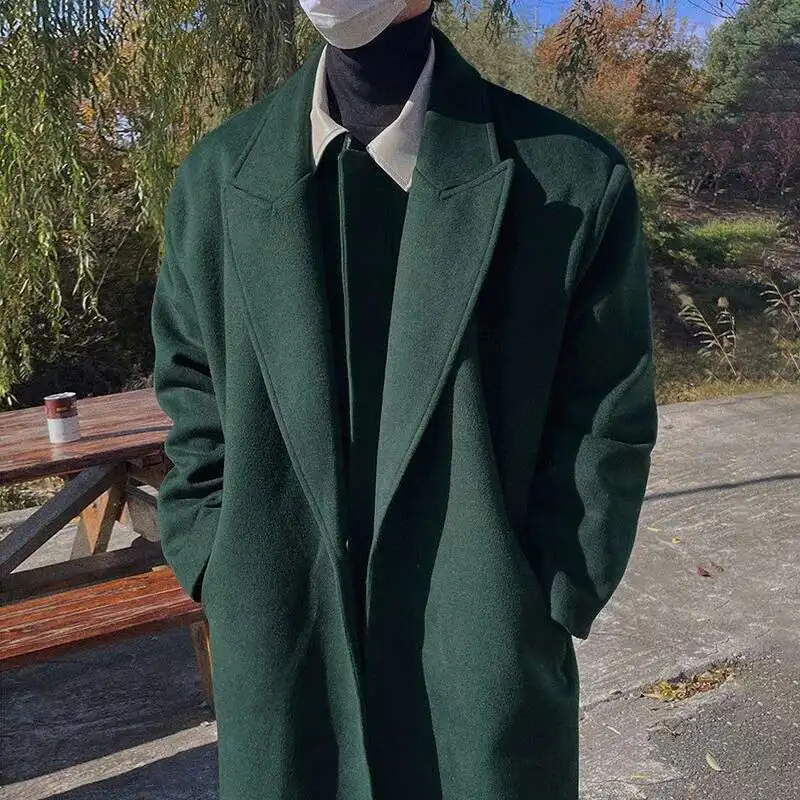
4. The Heritage Double-Faced Wool Sentinel
This coat employs a sophisticated double-faced wool construction that eliminates the need for lining while maximizing warmth.
Key Features:
– 28 oz double-faced 100% wool construction
– Clean interior finish with bound seams
– Half-belt back detail for tailored fit
– Convertible collar system
– Horn button closures with reinforced placket
Pros:
– Exceptional warmth-to-weight ratio
– Clean, sophisticated aesthetic
– Natural temperature regulation
– Surprisingly flexible despite substantial fabric weight
Cons:
– Limited water resistance
– Higher maintenance requirements
– Premium price point
5. The Urban Explorer Wool-Alpaca Blend
This innovative design combines the warmth of wool with alpaca’s hollow-fiber insulation for maximum thermal efficiency in a city-friendly design.
Key Features:
– 70% wool, 30% alpaca blend with herringbone weave
– Three-quarter length with ergonomic cut
– Internal windproof barriers at closures
– Angled hand warmer pockets with microfleece lining
– Removable wool-cashmere knit collar insert
Pros:
– Exceptional warmth without excessive weight
– Urban styling with technical performance
– Effective wind resistance through strategic barriers
– Versatile layering capabilities
Cons:
– Limited color options
– Specialized cleaning requirements
– Premium pricing
For those seeking maximum protection during winter’s coldest days, Metro Cloak’s collection of long wool overcoats provides extended coverage with premium insulation properties.
Best Value Wool Overcoats for Reliable Warmth
Finding the perfect balance between performance and price doesn’t mean compromising on essential winter protection. These carefully selected wool overcoats deliver exceptional warmth without the premium price tag.
The Metropolitan Commuter Coat
This versatile option delivers impressive cold-weather performance for daily urban wear.
Key Features:
– 80% wool, 20% nylon blend for durability and warmth
– Water-resistant treatment for light precipitation protection
– Classic single-breasted design with hidden placket
– Thigh-length cut balances protection with mobility
– Quilted polyester lining enhances insulation
Value Proposition:
– Excellent warmth-to-price ratio
– Versatile styling appropriate for business and casual settings
– Durable construction ensures multiple seasons of wear
– Easy care compared to higher wool percentage options
The Heritage Twill Overcoat
This coat employs traditional construction techniques with strategic material choices to control costs while maintaining warmth.
Key Features:
– 70% wool, 25% polyester, 5% other fibers
– Traditional twill weave enhances durability and wind resistance
– Three-button single-breasted closure with notched lapel
– Mid-thigh length with center vent for mobility
– Half-back belt detail for shape retention
Value Proposition:
– Classic styling with substantial warmth
– Well-balanced wool blend maintains insulation properties
– Traditional construction techniques ensure longevity
– Accessible price point with premium appearance
The Modern Topcoat
This contemporary design employs smart material selection to create an efficient thermal barrier without excess bulk or cost.
Key Features:
– 60% wool, 35% polyester, 5% cashmere blend
– Sleek modern cut with minimal detailing
– Knee-length for extended coverage
– Satin lining for smooth layering
– Melange texture adds visual interest
Value Proposition:
– Contemporary styling with good cold-weather performance
– Lighter weight makes it ideal for transitional seasons
– Cashmere inclusion adds softness at key contact points
– Accessible price point for entry-level wool coat buyers
The Technical City Defender
This performance-oriented option incorporates technical elements while maintaining a reasonable price point.
Key Features:
– 65% wool, 30% polyester, 5% nylon shell
– Water-resistant finish for urban commuting
– Chest-height hand warmer pockets
– Internal media pocket with headphone port
– Reflective details for nighttime visibility
Value Proposition:
– Technical performance features at midrange price point
– Practical design elements enhance daily usability
– Good insulation-to-weight ratio
– Modern aesthetic works well with casual wardrobes
For those seeking quality without the premium price tag, exploring wool blend overcoats offers excellent warmth at more accessible price points without sacrificing essential winter protection.
Specialized Wool Overcoats for Specific Needs
Different winter conditions and lifestyle requirements call for specialized wool overcoat designs. These purpose-built options address specific challenges while maintaining wool’s fundamental warming properties.
Lightweight Warmth Champions
For those who need serious thermal protection without bulk or weight, these innovative options employ advanced wool processing and construction:
- The Tropical Weight Merino Overcoat: Uses ultra-fine 17.5-micron merino wool in a tight weave that creates exceptional warmth despite weighing just 16 oz
- The Hollow-Core Performance Coat: Integrates hollow-core wool fibers that trap more air while reducing overall weight
- The Technical Wool Shell: Employs a densely woven wool exterior with strategic technical insulation panels only where needed most
Water-Resistant Wool Innovations
Traditional wool offers some natural water resistance, but these specialized options take protection to another level:
- The Classic Waxed Wool Topcoat: Revives traditional techniques with modern waxes for substantial water protection
- The Membrane-Enhanced Wool Guardian: Incorporates a breathable waterproof membrane between wool layers without compromising appearance
- The DWR-Treated Performance Overcoat: Features durable water-repellent treatment that maintains wool’s breathability
Urban Style Champions
These designs prioritize metropolitan aesthetics while maintaining serious thermal performance:
- The Slim Tailored Shield: Creates a streamlined silhouette while preserving essential insulation through strategic internal structuring
- The Contemporary Cropped Overcoat: Offers modern proportions while using exceptionally dense wool to compensate for reduced length
- The Designer Color Block Coat: Incorporates multiple wool weights and types in a fashion-forward design that doesn’t compromise on warmth
Extreme Wind Protection
For environments where cutting winds pose the primary challenge:
- The Barrier Melton Coat: Uses an exceptionally tight weave and strategic internal windproofing at vulnerable seams
- The Double-Layer Fortress: Employs two separate wool layers with offset seams to eliminate any potential cold air penetration
- The Technical Wool Hybrid: Combines traditional wool with technical windproof panels at critical exposure points
Those facing particularly harsh conditions should consider specialized long wool overcoats designed specifically for extreme cold protection.
Mens Heavy Winter Coat, Mens Insulated Coat, Mens Parka Coat
Price range: $175.52 through $237.36 Select options This product has multiple variants. The options may be chosen on the product pageMens Big and Tall Winter Coats, Mens Down Coat, Mens Hooded Winter Coat, Mens Puffer Coat
Price range: $126.44 through $217.01 Select options This product has multiple variants. The options may be chosen on the product pageMens Big and Tall Winter Coats, Mens Hooded Winter Coat
Price range: $80.32 through $106.68 Select options This product has multiple variants. The options may be chosen on the product pageMens Double Breasted Pea Coat, Mens Wool Blend Coat, Mens Wool Pea Coat
Price range: $136.84 through $157.36 Select options This product has multiple variants. The options may be chosen on the product pageMens Cashmere Overcoat, Mens Hooded Winter Coat, Mens Wool Blend Coat
Price range: $128.72 through $139.68 Select options This product has multiple variants. The options may be chosen on the product pageMens Hooded Winter Coat, Mens Insulated Coat, Mens Puffer Coat, Mens Quilted Coat
Price range: $139.88 through $177.72 Select options This product has multiple variants. The options may be chosen on the product page
Essential Care Tips to Preserve Your Wool Overcoat’s Warmth
Proper maintenance isn’t just about appearance—it directly affects your wool overcoat’s ability to keep you warm year after year. Following these essential care practices preserves the insulating properties that make wool exceptional.
Practice Preventative Maintenance
Brush your coat regularly with a natural bristle brush to remove surface dirt and debris that can wear down fibers. Brushing also helps restore the nap and loft that trap warm air.Address Moisture Properly
If your coat gets wet from snow or rain, never apply direct heat. Instead, hang it in a well-ventilated area away from direct heat sources and allow it to dry naturally. This preserves the lanolin content that provides natural water resistance.Use Proper Storage Techniques
During off-seasons, store your coat on a shaped wooden or padded hanger to maintain structure. Use a breathable garment bag rather than plastic, which can trap moisture and lead to mildew that damages fibers.Follow Appropriate Cleaning Protocols
Most wool overcoats should be professionally dry-cleaned only once per season, typically at the end before storage. Excessive cleaning can strip natural oils and damage the fabric structure that creates insulation.Address Small Issues Immediately
Repair small tears or loose buttons promptly before they worsen. Areas where cold air can penetrate will significantly reduce the coat’s thermal efficiency.
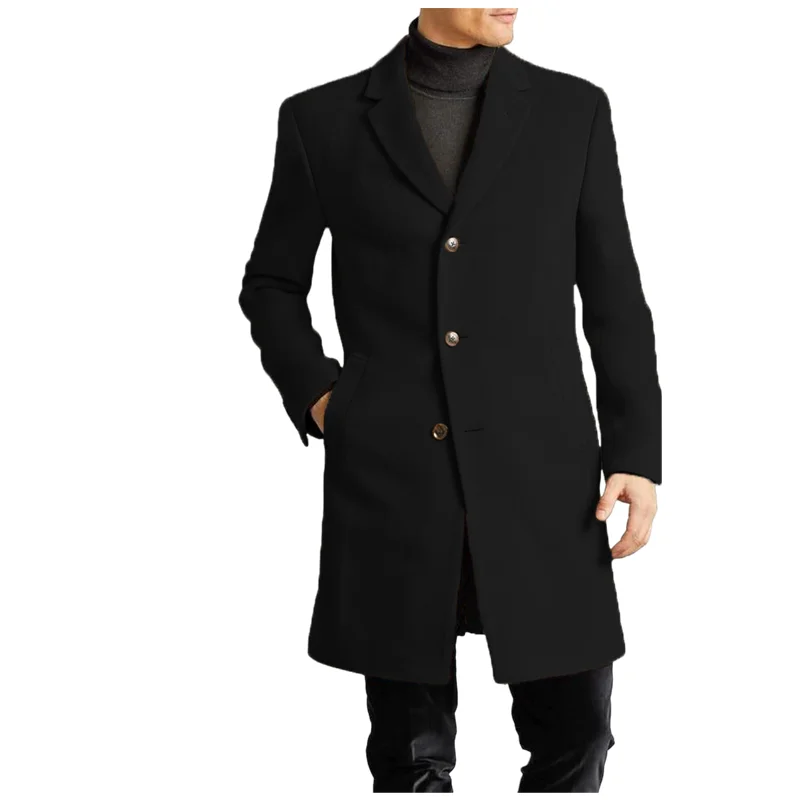
Understanding exactly how warm wool coats can be in winter with proper care helps you maximize your investment and ensure reliable protection season after season.
Are Wool Overcoats Worth the Investment for Extreme Cold?
When facing truly frigid temperatures, many wonder whether traditional wool overcoats can compete with modern technical outerwear. The answer depends on several key factors.
For temperatures down to about 15-20°F (-9 to -6°C), a quality wool overcoat with proper layering provides excellent protection while maintaining a sophisticated appearance. The natural insulation properties of wool, particularly in heavier weights above 24 ounces, create an effective barrier against cold air.
Where wool truly excels is in its versatility across temperature ranges. Unlike many technical jackets that become uncomfortably warm indoors, wool naturally regulates temperature, adapting to both outdoor cold and heated indoor environments. This makes it particularly valuable for urban wear with frequent transitions between indoors and outdoors.
From a long-term perspective, quality wool overcoats represent exceptional value. While the initial investment may exceed that of synthetic alternatives, premium wool coats often provide 10-15 years of reliable service with proper care, compared to 3-5 years for typical technical jackets.
For extreme conditions below 10°F (-12°C), wool overcoats may require strategic layering or selection of specialized designs incorporating technical elements. Understanding the differences between short versus long coat styles becomes particularly important in these conditions, as extended coverage significantly impacts overall warmth.
Can Wool Overcoats Be Truly Waterproof?
Traditional wool offers natural water resistance thanks to lanolin, the waxy substance sheep produce to protect their coats. This gives wool the ability to repel light precipitation and prevent moisture from immediately penetrating to the skin. However, this natural protection has limitations.
In extended or heavy precipitation, traditional wool will eventually become saturated. While wool retains approximately 80% of its insulating ability when wet (far better than cotton or down), truly waterproof wool requires additional treatment or technical integration.
Modern approaches to creating waterproof wool overcoats include:
- Laminated membranes: Technical waterproof/breathable membranes bonded to wool fabric
- DWR treatments: Durable water repellent finishes that enhance natural water resistance
- Waxed wool: Contemporary versions of traditional waxing techniques that maintain wool’s breathability
- Strategic paneling: Using naturally water-resistant wool for most of the coat with technical waterproof materials at high-exposure areas
These innovations come with tradeoffs. Fully waterproofed wool often sacrifices some breathability and natural feel. For many urban environments where exposure to precipitation is brief, traditional wool with its natural water resistance often provides the best balance of protection, comfort and appearance.
For comprehensive winter protection options including waterproof variations, exploring Metro Cloak’s winter coat collection provides numerous specialized options.
How to Layer Under a Wool Overcoat for Extreme Temperatures
Strategic layering transforms a standard wool overcoat into a system capable of handling severe winter conditions. The key lies in creating multiple thin layers of trapped air rather than one bulky layer.
Base Layer Essentials:
– Choose moisture-wicking fabrics like merino wool or technical synthetics
– Avoid cotton which loses insulating properties when damp from perspiration
– Ensure a close but not constrictive fit to maximize warmth without bulk
– Cover vulnerable areas like the lower back and wrists completely
Mid-Layer Strategy:
– Lightweight merino sweaters or technical fleece provide exceptional warmth-to-weight ratio
– Quarter-zip designs allow temperature regulation without removing layers
– Vest options add core warmth without bulking up sleeves for better coat fit
– Consider thin down or synthetic insulated vests for maximum thermal efficiency
Common Layering Mistakes:
– Using too few thick layers rather than multiple thin ones
– Neglecting the neck area which allows significant heat loss
– Creating excessive bulk that compresses insulating air pockets
– Forgetting to account for indoor environments in your layering system
For business environments, thinner merino wool or cashmere layers maintain a refined appearance while providing excellent insulation. For understanding exactly how different coat types compare in providing warmth, the ultimate guide to men’s coat warmth levels offers comprehensive insights.
Conclusion: Finding Your Perfect Winter Wool Companion
Selecting the ideal wool overcoat for winter warmth involves balancing several key factors: wool type, construction quality, fit considerations, and specific climate needs. The perfect coat serves as both a practical tool against winter’s harshest conditions and a refined expression of personal style.
For extreme cold protection, prioritize heavier weights (24+ oz), higher wool percentages, and construction features like double-breasting and wind guards. Those in wet climates should consider specially treated wool or technical hybrids that enhance water resistance without sacrificing wool’s natural benefits.
Remember that proper fit remains essential—too tight restricts layering potential while too loose allows cold air circulation. The right wool overcoat should provide comfortable movement while maintaining a clean silhouette even with appropriate layers underneath.
Ultimately, a quality wool overcoat represents more than just winter protection—it’s an investment in lasting style and function that improves with proper care. By understanding the unique properties of different wool types and construction techniques, you can select a coat that will provide reliable warmth and distinguished style for many winters to come.


